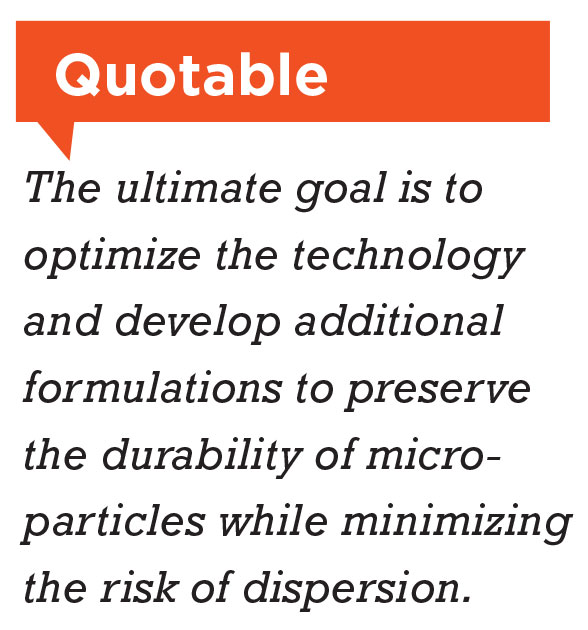| By Richard Mark Kirkner, Editor |
 |
Like a number of anti-VEGF drugs that have been developed to treat retinal disease, sunitinib is a cancer drug. First approved in 2006 to treat renal cell carcinoma and imatinib-resistant gastrointestinal stromal tumors, it’s now also indicated for pancreatic neuroendocrine tumors. The drug is a small-molecule pan-vascular endothelial growth factor antagonist.
Graybug Vision is developing intravitreal sunitinib as a twice-yearly treatment for neovascular age-related macular degeneration and recently reported data from a six-month extension study of the ALTISSIMO Phase IIb trial.
The trial initially evaluated 1- and 2-mg doses of the sunitinib malate candidate, known as GB-102, in two phases. The 12-month treatment phase, or core trial, compared both doses given at baseline and six months with bimonthly 2-mg aflibercept. After an interim safety analysis early last year demonstrated a higher number of particle-migration incidents in the 2-mg vs. the 1-mg group, Graybug halted development of the 2-mg formulation. ALTISSIMO patients who received the 2-mg injection initially were switched to 1 mg for the second dose.
Graybug previously reported 12-month results that showed patients in the GB-102 1-mg arm had a median time of five months to first rescue treatment, and 48 percent went at least six months before needing any rescue treatment. An additional analysis showed a 58-percent reduction in injection frequency after starting GB-102 compared to before trial enrollment.
Secondary endpoints included change in best-corrected visual acuity and central subfield thickness. However, the trial wasn’t appropriately powered to determine noninferiority to aflibercept. The extension study enrolled 11 patients in the core trial’s GB-102 1-mg arm.
Arshad Khanani, MD, AM, managing partner and director of clinical research and fellowship at Sierra Eye Associates in Reno, Nevada, and a clinical associate professor at the University of Nevada, answers questions about GB-102 and the ALTISSIMO extension study. Dr. Khanani is a consultant to and receives research support from Graybug Vision.
Q: What’s novel about the mechanism of GB-102?
A: GB-102 is a sustained-released formulation of sunitinib. The thought is that inhibition of receptor tyrosine kinase blocks all VEGF signals. The tyrosine kinase is specific to VEGF receptors 1, 2 and 3, which blocks all VEGF signals–A, B, C and D, as well as placental endothelial growth factors.
The drug disperses through a sustained-delivery platform of microparticles. The drug is placed into these particles that are designed to degrade in six months, essentially decreasing the treatment burden to two injections.
Additionally, if GB-102 proves to be a pan-VEGF inhibitor, data from other trials shows that blocking VEGF C and D can also optimize visual acuity. Durability is the most important play here.
Q: What’s the key takeaway from the ALTISSIMO extension study?
A: This was a six-month extended observation phase in which patients were monitored without additional treatment. They were seen every month for evaluation and to determine how long the dose they received six months ago lasts.
Fifty-eight percent of the patients who completed the core trial signed up for the extension study; 55 percent of them actually achieved at least 12 months of duration. The fact that it’s lasting more than six months in half the patients is very intriguing. It needs to be looked into more. What are the characteristics of patients that make GB-102 last almost a year in some of them?
Q: What would that involve?
A: We need to look into the baseline imaging characteristics, including intraretinal and subretinal fluid, and pigment epithelial detachments as well as pre-trial injection frequency in the patients who needed fewer injections.
 |
Q: What can be taken from the Phase II findings to help inform the design of the Phase III trial?
A: We need to determine the right population that can benefit from GB-102. Also, the formulation enhancement that the company has already started is important because there were still some levels of particle migration in the 1-mg treatment group in
ALTISSIMO. Obviously, going from 2 to 1 mg was very helpful in terms of lowering the number of treatment-associated adverse events, but that’s ongoing work.
Q: Where would a longer-duration therapy such as GB-102 potentially fit in the retina specialist’s toolbox?
A: We have great treatments that work, but obviously, patients need to receive treatment anywhere from every four to eight to 12 weeks, and then maybe with faricimab up to every 16 weeks. In the real-world we know that undertreatment leads to vision loss. Can GB-102 help our patients go six months between injections? ALTISSIMO confirmed that that can happen in a subset of patients, and CST results were similar to aflibercept, but there was some reduction in BCVA.
Looking deeper into it, we saw that reduction in BCVA was primarily driven by six patients: two of whom were difficult to treat, two who had unrelated adverse events, and two with particle dispersion. We’re continuing to learn what’s the best population for GB-102, and the rescue criteria are evolving to optimize visual acuity.
Q: What’s next in the development of GB-102?
A: Work is already under way to optimize the technology and the platform to preserve the durability of microparticles of 1-mg GB-102 while minimizing the risk of dispersion. A potential further innovation is maybe putting sunitinib in an injectable implant or in microparticles in a different platform. The ultimate goal is to optimize the technology and develop additional formulations to preserve the durability of microparticles while minimizing the risk of dispersion. RS



